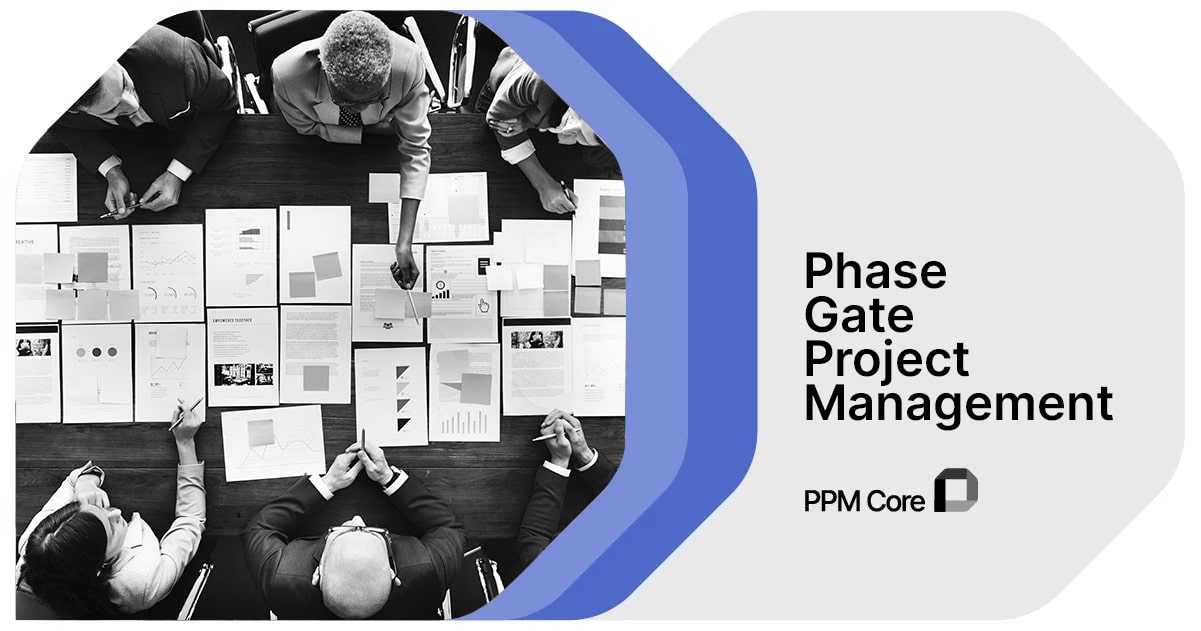Navigating Success with Phase Gate Project Management
In the ever-evolving landscape of project management, various methodologies have emerged to help organizations streamline their processes, enhance efficiency, and mitigate risks. Among these methodologies, Phase Gate Project Management has gained prominence as a robust approach to ensure that projects are on track and meet their objectives. This article will explore the pros and cons of Phase Gate Project Management to help you determine if it fits your organization.
Understanding Phase Gate Project Management
Phase Gate Project Management is a structured approach to project planning, execution, and control. It divides a project into distinct phases, or gates, each separated by a comprehensive evaluation point before progressing to the next stage. These gates act as checkpoints, where project teams and stakeholders assess the progress and decide whether to proceed to the next phase.
This approach is also commonly called the stage-gate process.” It is a popular project management methodology, particularly in industries with complex or high-risk projects, such as product development, construction, and research.
Terminology and considerations:
Those following our writing will note that we believe a common lexicon goes a long way for understanding and developing a common sense platform from which issues are understood and appropriate actions are taken to resolve.
- Phase Division: The project is divided into several distinct phases. Each phase represents a major portion of the project, often with its own set of objectives and deliverables.
- Gate Reviews: At the end of each phase, a gate review is conducted to evaluate the work completed. The gate review involves a structured assessment by a designated team, often called a gate review board or gatekeeper. They assess whether the project has met its objectives, is on track, and should proceed to the next phase. Critical criteria for evaluation often include scope, budget, timeline, quality, and risk assessment.
- Decision Points: The gate review results in a decision regarding the project’s future. Three common outcomes are:
-
- Pass: If the gatekeepers are satisfied that the phase objectives have been met, the project can move on to the next phase.
- Hold: Sometimes, the gatekeepers might place the project on hold if some concerns or issues need to be addressed before proceeding.
- Terminate: If the project does not meet the criteria for moving forward, it may be terminated.
The Pros:
Like many things, there are pros and cons. Our best approach is to determine the approach that will lead to success. This means selecting a method that reduces the risks associated with the work.
- Risk Mitigation: Phase Gate Project Management enables thorough risk assessment at each gate, identifying potential issues early. This allows for timely corrective actions and minimizes the chances of costly project failures.
- Enhanced Accountability: The methodology defines roles and responsibilities clearly, making team members more accountable for their tasks. This structure ensures that everyone understands their role in project success.
- Cost Control: By reviewing project status and costs at each gate, organizations can allocate resources more efficiently. This leads to better cost control and prevents overruns.
- Flexibility: Phase Gate allows for adjustments to project scope, schedule, and resources between gates. This adaptability is particularly useful when dealing with changing market conditions or customer needs.
- Quality Assurance: The methodology promotes consistent quality checks, ensuring that the project meets the required standards at every gate.
- Lessons Learned: Opportunities for continuous improvement through lessons learned in gate reviews.
- Focus – The stage gate approach ensures a focus on the topics that are most important at this point in the project. For example, a focus on the testing of the product when we do not know what the customer requires or what we are trying to do is a distraction.
The Cons:
The goal of the organization and the project manager is not to get caught up in dogma. Knowing the downsides of the espoused approach makes it possible to proffer processes to mitigate the weakness. Below are some thoughts on the cons of stage gate approaches. We encourage you to ponder the method’s shortcomings and significantly review your company’s historical record if it exists.
- Rigidity: The structured nature of Phase Gate can be seen as a drawback, particularly in industries where rapid adaptation is essential. This rigid approach may slow down projects and hinder innovation.
- Resource Intensive: Implementing Phase Gate Project Management requires a significant investment in time, resources, and expertise, making it less suitable for smaller organizations with limited resources.
- Potential for Bureaucracy: The detailed documentation and approval processes can sometimes lead to bureaucratic inefficiencies, causing delays in decision-making.
- Inaccurate Predictions: The methodology relies on predictive analysis at each gate. If the initial estimates are inaccurate, it can lead to flawed decision-making and misguided project directions.
- Complexity: For newcomers to project management, Phase Gate can appear complex and overwhelming. Training and education are often required for successful implementation.
- Checklist Mentality – Stage gate often comes with checklists associated with the gate deliveries. Checklists are meant to help with the items to be delivered, but sometimes this checklist can lead to the belief that our team members that the list is most important and team members’ brains are suppressed.
Is Phase Gate Project Management Right for You?
Phase Gate Project Management is a powerful method well-suited for large organizations with complex projects that require meticulous planning, risk management, and quality control.
However, from experience, a single dogmatic approach is not suitable for the range of project management constraints.

Do you find this article interesting?
Subscribe to our Newsletter for updates on the latest blog articles.
Ultimately, the choice of project management methodology depends on your organization’s specific needs and goals. Many organizations adopt a hybrid approach, perhaps combining elements of Phase Gate with other methods, such as Scrum, to balance structure and flexibility.
PPM Core and the Phase Gate model
PPM Core features an integrated phase-gate model, allowing project managers to view the different timelines of the project. The phase gate approach provides clear visibility of the project progress and key elements, supports effective decision making, and helps project managers to prioritize projects better.
Through this tool/method available in the PPM Core platform, project managers can have better control over projects while managing the project execution and clear insights into the current stage and the projects progress
The phase gate model feature in PPM Core is on a Project and Portfolio level. You can set the phase-gate model for individual projects and track it on a dedicated Project card. And you compare the phase gate models of multiple projects in one view on the Portfolio level on a dedicated project scorecard.
Summary
In conclusion, Phase Gate Project Management offers a systematic way to ensure project success through rigorous gatekeeping and risk management. Its advantages are substantial, but so are its challenges. Careful consideration of your project and organization’s needs and capabilities is essential to deciding whether to embrace this methodology or explore alternative project management approaches.
About the Author
Jon M. Quigley PMP CTFL is a principal and founding member of Value Transformation, a product development training (from idea to product retirement) and cost improvement organization established in 2009.

